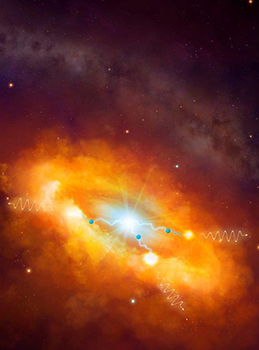Latest News Archive
Please select Category, Year, and then Month to display items
31 March 2021
|
Story Xolisa Mnukwa
![]()
The University of the Free State (UFS) Bloemfontein Campus conducted its first digital Campus Student Representative Council (CSCR) elections for the 2020/2021 SRC term. Elections for the 12 ex officio portfolios were conducted from 1 to 4 December 2020, while the elections for the 7 elective portfolios were conducted from 23 to 26 March 2021.
Of the 22 941
eligible voters for the elective portfolios, 8 044 cast their votes, which accounts for 35% of the voter’s roll. The 2021 voter turnout is an increase of 9,53% compared to the 2019 elections that were conducted manually. The CSRC incumbents mentioned below were officially inaugurated on 29 March 2021 and an official handover of the outgoing to the incoming incumbents was facilitated by the Student Governance Office.
The results below depict the final outcome of the CSRC elective portfolios. Elections were concluded at 21:00 on 26 March 2021. Watch video for the official inauguration.
| Position | Candidate | Votes |
| PRESIDENT | Jerry Thoka | 5 747 (74,6%) |
| Kamohelo Seleke | 1 960 (25.4%) |
| DEPUTY PRESIDENT | Loretta Mosito | 5 563 (72,4%) |
| Esona Yapi | 2 116 (27,6%) |
| SECRETARY | Ayanda Dlova | 5 988 (78,3%) |
| Simphiwe Zonke | 1 660 (21,7%) |
| TREASURER | Orefile Sefika | 5 425 (70,7%) |
| Thandiwe Kula | 2 246 (29,3%) |
| POLICY AND TRANSFORMATION | Vusumzi Gqalane | 4 988 (63,8%) |
| Thabo Duma | 1 649 (21,1%) |
| Nompumelelo Khoza | 1 178 (15,1%) |
| STUDENT DEVELOPMENT AND FIRST-GENERATION STUDENTS | Tshiamo Sebolai | 4 681 (60,4%) |
| Fhumulani Sididzha | 1 707 (22,0%) |
| Ofentse Ntsane | 1 365 (17,6%) |
| COMMUTER STUDENTS | Dimpho Mokhoantle | 4 469 (58,1%) |
| Marumo Rakwata | 1 643 (21,4%) |
| Lusanda Feleza | 1 582 (20,6%) |
The results below depict the outcome of the ex officio elections that took place from 1 to 4 December 2020:
| Position | Candidate |
|---|
| ASSOCIATIONS STUDENT COUNCIL | Michael Mnguni |
| STUDENT ORGANISATIONS COUNCIL | Tebogo Sako |
| ACADEMIC STUDENT COUNCIL | Katlego Booysen |
| DAY RESIDENCE COUNCIL | Sibongiseni Mncela |
| CAMPUS RESIDENCE COUNCIL | Mpho Maubane |
| POSTGRADUATE STUDENT COUNCIL | Nico Janse van Rensburg |
| INTERNATIONAL STUDENT COUNCIL | Rufaro Chakanyuka |
| STUDENT MEDIA AND DIALOGUE COUNCIL | Wandile Manqele |
| UNIVERSAL ACCESS AND SOCIAL JUSTICE COUNCIL | Katlego Sekele |
| CIVIC AND SOCIAL RESPONSIBILITY COUNCIL | Gert Terblanche |
| ARTS AND CULTURE COUNCIL | Katleho Khaola |
| SPORTS COUNCIL | Bongumusa Khumalo |
Two scientists part of team that discovers the source of the highest energy cosmic rays at the centre of the Milky Way
2016-03-22

Artist's impression of the giant molecular clouds surrounding the Galactic Centre, bombarded by very high energy protons accelerated in the vicinity of the central black hole and subsequently shining in gamma rays.
Artist's impression: © Dr Mark A. Garlick/ H.E.S.S. Collaboration Spotlight photo:
Dr Brian van Soelen and Prof Pieter Meintjes of the UFS Department of Physics.
Photo: Charl Devenish
|
H.E.S.S. (High Energy Stereoscopic System) scientists publically revealed their latest galactic discovery in the international science journal, Nature, on 16 March 2016. These scientists were able to pinpoint the most powerful source of cosmic radiation – which, up to now, remained a mystery.
Part of this team of scientists are Prof Pieter Meintjes and Dr Brian van Soelen, both in the University of the Free State (UFS) Department of Physics. Dr Van Soelen explains that they have discovered a proton PeVatron – a source that can accelerate protons up to energies of ~1 PeV (10^15 eV) – at the centre of the Milky Way. The supermassive black hole called Sagittarius A has been identified as the most plausible source of this unprecedented acceleration of protons.
The protons are accelerated to Very High Energy (VHE) gamma rays. The energy of these protons are 100 times larger than those achieved by the Large Hadron Collider at CERN (the European Organization for Nuclear Research).
According to Dr Van Soelen, the fact that this research has been published in Nature demonstrates the importance and pioneering nature of the research conducted by H.E.S.S. The H.E.S.S. observatory – operational in Namibia – is a collaboration between 42 scientific institutions in 12 countries.
In 2006, H.E.S.S. was awarded the Descartes Prize of the European Commission – the highest recognition for collaborative research – and in 2010 the prestigious Rossi Prize of the American Astronomical Society. The extent of the observatory’s significance places it among the ranks of the Hubble Space Telescope and the telescopes of the European Southern Observatory in Chile.
“The next generation VHE gamma-ray telescope,” Dr Van Soelen says, “will be the Cherenkov Telescope Array (CTA), which is currently in the design and development stage.” Both Dr Van Soelen and Prof Meintjes are part of this project as well.
H.E.S.S. has issued a complete statement about the paper published in Nature.